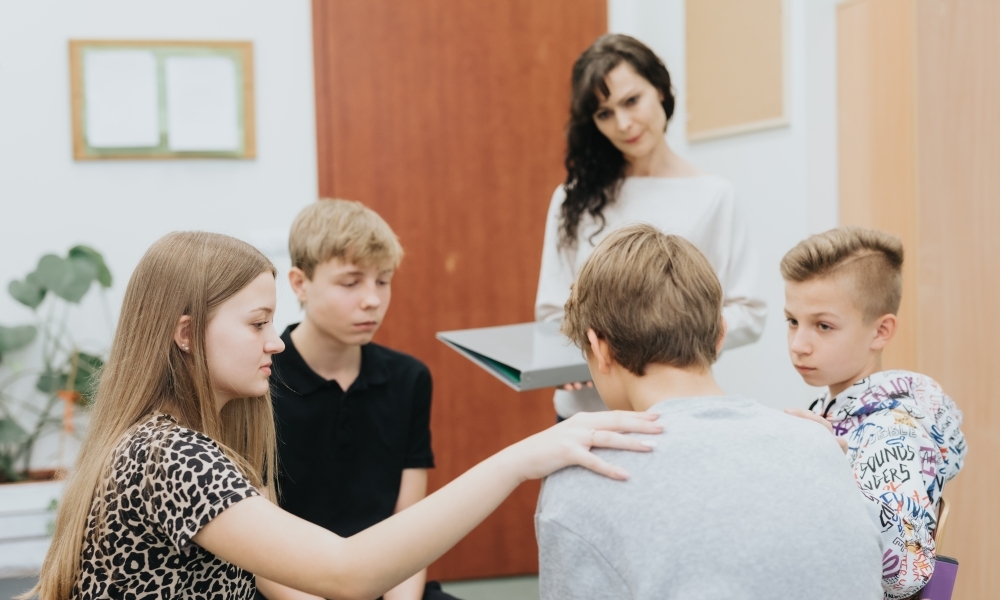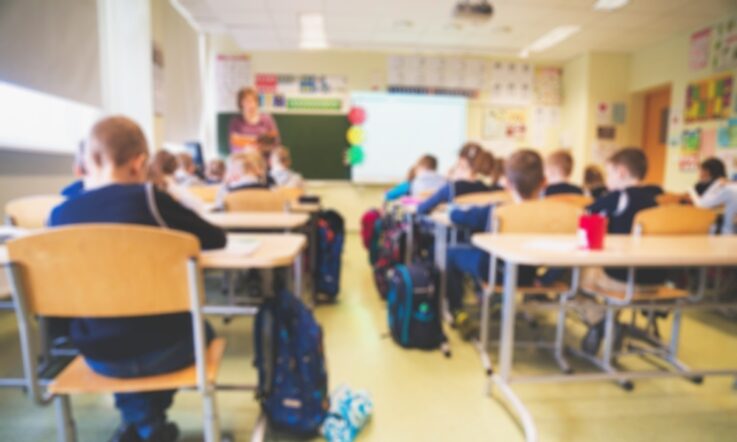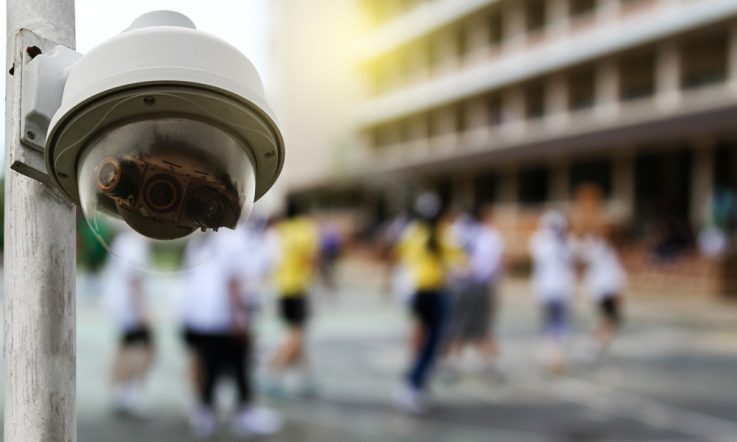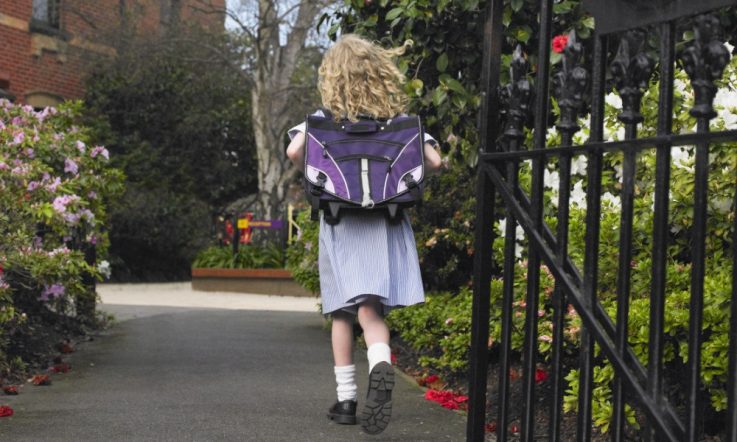‘The way [Restorative Justice] differs from other approaches is by focusing not on the rule that's been broken, or the behaviour that’s been identified, but by focusing on the people and their relationships.’ Dr Kristin Reimer is a Senior Lecturer in the School of Education, Culture and Society at Monash University, focusing on educational access, inclusive education and Restorative Justice. She is also the creator and developer of Restorative Schools Australia – a website for those who are curious about using Restorative Practice in Australian Schools.
Here, in the first instalment of a 2-part Q&A with Teacher, Dr Reimer unpacks the philosophical framework of Restorative Justice that was first implemented in schools in the 1990s in Australia.
Can you start off by explaining what Restorative Justice is? And, maybe also what it isn’t?
It really is a philosophical framework that centres relationships in whatever setting – in this case in schools – but also calls attention to issues of justice and issues of equity, and includes specific processes to address harm and to transform conflict.
But the really important part of that is the relational aspect and the centring of relationships. So you could say that it is about building relationships, maintaining relationships and then repairing relationships when things go wrong or when there's some sort of issue that arises.
Because it's so broad in that way – the building, the maintaining and the repairing of relationships – it does ideally permeate everything in schools. So, it would impact how we approach discipline, how we teach our pedagogy, the relationships between staff members, relationships with families, policies – everything that we would identify as schooling.
And the other part is that it is also an educational approach, because it’s about learning and about curiosity. It’s about learning how we can be together, and how we can thrive with one another.
And often that sort of learning – that social learning or that relational learning – is kept separate from the other learning: the academic learning, the Mathematics, the Science, the History ... but they're really integral. So we learn with curiosity, we learn with inquiry about ourselves, about one another and the world around us. So that’s what it is.
But I would say what some of the misconceptions are, is instead of focusing on the building, maintaining and repairing relationships part, many schools will see it as only a way to deal with the repairing part (so dealing with the conflict or dealing with the harm).
And although that is definitely important, and Restorative Justice does offer a unique way to do that, if you’re doing that separate from the proactive part – the building and maintaining relationships part – it's really tough. Because you don't have that relational trust, you don't have that understanding, and you don't have some of the skills and practices in place to make the repairing part possible. So that's one of the misconceptions.
And the other main one, I would say, is that it's often seen as a behaviour management approach and it really isn’t about behaviour. It’s about relationships. It's about people and it's about their needs. And behaviour is often talked about as a way to communicate those things.
And so you can communicate your needs, you can communicate issues through how you behave, but if you focus only on the behaviour – controlling someone's behaviour, or managing someone’s behaviour – it's like dealing with the symptoms without dealing with the actual causes. That's where the relational approach is.
So those are the two main misconceptions: either just using it to repair (deal with conflict) or using it to manage behaviour.
What are the cultural origins of the framework?
Because it's a philosophical worldview that is based on those fundamental values of how we relate with one another, the roots of the philosophy, the principles and the practices are really within Indigenous, and more specifically, Afro-Indigenous communities. And so of course in Indigenous communities, in Afro-Indigenous communities, there's a huge variety and diversity within those communities.
But some of the commonalities of Indigenous approaches that connect with Restorative Justice would be approaching conflict with a focus on repairing the harm done rather than a focus on punishment.
But also the inherent connections to one another. So upholding and valuing those connections – the relational side. And also the focus on storytelling – opening a space to listen to one another and to share our narratives and our stories.
And so there has been quite a bit done in other places about understanding the connections to very specific communities and specific nations and worldviews – so the Maori in New Zealand, the Lakota First Nations and other First Nations, and Métis and Inuit in Canada and the United States.
There hasn't been as much done here in Australia to make the connections to specific Nations and specific approaches to justice and relationships. I think there is a lot to be done to learn from the specific Nations here with Indigenous Aboriginal and Torres Strait Islander Nations about their approaches to justice as well.
How does Restorative Justice differ from common approaches to behaviour management or conflict resolution used in schools?
The way it differs from other approaches is by focusing not on the rule that's been broken, or the behaviour that’s been identified, but by focusing on the people and their relationships. So when something happens, it doesn't really matter that a rule has been broken.
Rules are there because we've decided together that there are certain ways that we want to be with one another and that's going to keep us safe, it's going to keep us connected, and it's going to make for a positive experience in whatever setting. And so there's a reason for the rule, but we have to get to what's behind the rule.
And behind the rule are safety and relationships for the most part – those are the 2 main things – the more important parts that gets us to actually addressing the issue.
If we only focus on ‘a rule has been broken’, then our question is, ‘okay, who's done this? Who's broken the rule? What sort of punishment do they deserve?’ And that might address in a very short-term way what's happening, but it doesn't actually address in any substantial or any long-term way what's going on. It doesn't really move us into the future. So it could address the symptoms, but it doesn't address the cause.
And that can also have some really negative impacts on the people that we’re focusing on. So if there is a punishment that we're providing in a school, there’s a good intention through that punishment – there's a reason that that we reach for those, because we want to stop negative behaviour or harm. And we want to sort of deter people from doing similar things in the future.
But it often actually causes people to simply try to avoid getting punished. It doesn't really change a sense within themselves about what they're doing, and how that is impacting people and making different choices in the future.
And a lot of the approaches in schools are really based on that external motivation – so, either rewards or punishment. We reward behaviour that we like, and we punish the behaviour that we think is negative. But it's actually not helping us as young people or even as adults to think about and understand our actions and how they impact the connections with other people and how it impacts ourselves, how it impacts the community as a whole.
The difference with Restorative Justice is moving it internally, for one thing, to really help us have a deeper sense of our own actions and our own interactions. And so the first question that Restorative Justice asks, rather than ‘who's done this?’ would be simply ‘what happened?’ to open it up much more broadly for that storytelling aspect.
But also to uncover things that we might not see as causes if we are simply focusing on ‘who has done this?’. So it's trying to understand things at a deeper level, and it's also repositioning the ‘issue’ as something for us all to focus on solving rather than the person that we need to change to behave better.
What's happening here? How is it impacting different people? What can we actually do to solve that issue so that people do feel safe, that they can make different choices going forward, and they feel that we are a community that works on this together?
It's about sending a very clear message to people: ‘what you're doing right now might be might not be the best way to go forward, it might be impacting people negatively, but you are not disposable to us. You are part of our community. You matter and we need to figure out together how we can go forward in the best way possible.’
And de-catastrophising conflict is really important too – that conflict is simply normalised, that of course we're going to have conflict, that it is a normal and healthy part of being together. That it is part of community and that we can actually grow through conflict.
What we want to make sure of is that it's not destructive. And the way to do that is by in the little conflicts, we practise our skills to actually name what's going on, figure out ways to solve it, and figure out ways to go forward. And then we can do that on some of the bigger conflicts that exist too.
And part of that is also the flexibility. And so often in schools, we say, ‘if you break this rule, this is what’s going to happen to you,’ and there's a sense that consistency is the most important thing to do. But things aren’t always happening for the same reason. People don't do things for the same reason as the next person does – there are different causes.
And so we need to have the flexibility to actually also address those causes on a case-by-case basis, so that we don't narrow ourselves or fence ourselves in by saying ‘this is the way we always respond to this behaviour.’
Stay tuned: In tomorrow’s article, we talk further with Dr Kristin Reimer about how schools can build a Restorative Justice culture, and how the approach can be used by teachers in practice within the school setting.
Further reading
To read more about how you can use Restorative Practice in your school setting and to read more about Kristin’s work, visit https://restorativeschoolsaustralia.org/.
Editor's note: This article was updated on 31 October 2022 to clarify that the philosophical framework of Restorative Justice was first implemented in schools in the 1990s in Australia.
In this Q&A, Dr Kristin Reimer delves deeper into why we set school rules and how we use them to address conflict when it arises. Rather than focusing on who is to blame and what punishment they deserve when conflict arises, Dr Reimer explains that a Restorative Justice approach would instead be to first ask ‘what happened?’
In your next staff meeting, discuss with colleagues how you can start to shift these responses to conflict to include encouraging storytelling as a means to focus on and repair relationships.



